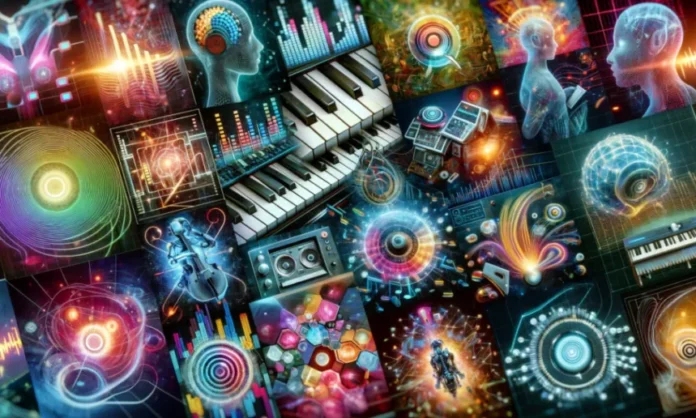In the relentless pursuit of content that captivates and differentiates, sound often plays the unsung hero. Beyond mere background scores, truly impactful media relies on bespoke sound design – the subtle clicks, the atmospheric hums, the otherworldly whispers that evoke emotion and define an experience. While traditional AI music generators excel at crafting harmonious melodies and rhythms, their untapped potential lies not in creating finished songs, but in serving as an unprecedented toolkit for the contemporary sound designer. To truly stand out, the discerning creator should learn how to wield their AI music generator for unique sound design as an abstract brush, painting with noise, texture, and sonic anomalies rather than conventional notes.
Deconstructing the “Music” for Pure Sonic Elements
The conventional use of an AI music generator is to produce a coherent musical piece. However, a novel approach involves deliberately deconstructing the AI’s output. Instead of seeking a perfect melody, the sound designer looks for:
- Algorithmic Artifacts: Those moments where the AI “misinterprets” a prompt or creates an unexpected sonic glitch. These can be goldmines for unique, abstract textures – digital squelches, distorted hums, or alien resonances that no synthesizer preset could replicate. These “errors” become the raw material for innovation.
- Micro-Samples of Intent: Even in a conventionally generated track, individual notes, short phrases, or transient sounds can possess an uncanny character. By isolating these micro-samples, one can build a library of highly specific, AI-infused sound events – a single, unusually resonating pluck, a distorted drum hit with peculiar harmonics, or a fragmented vocal shimmer. These are then recontextualized and layered in human-designed soundscapes.
- Procedural Atmospheres: Instead of prompting for a “forest soundscape,” one could prompt the AI for “melancholic wind chimes in a digital rainstorm” or “the sound of gears turning underwater, mixed with a distant, eerie choir.” The resulting output, even if not a “song,” is a complex, evolving atmosphere that can be stretched, reversed, or processed further to create truly unique ambiences for film, games, or interactive installations.
This approach views the AI’s musical output not as a finished product, but as a rich, generative sound pool waiting to be sculpted.
The AI as an “Idea Engine” for Non-Linear Audio
Traditional sound design often begins with an explicit idea: “I need a whoosh,” or “I need a futuristic interface sound.” The AI music generator allows for a more abstract, generative starting point, turning it into an “idea engine” for non-linear audio elements:
- Conceptual Prompts, Abstract Outputs: Instead of musical genres, input abstract concepts like “the feeling of dread,” “the color violet,” or “the geometry of chaos.” While the AI will attempt to generate music, the key is to listen for the underlying texture and mood in the resultant audio. These often highly experimental outputs provide a unique sonic fingerprint that can then be processed, filtered, and integrated into complex sound design layers.
- “Sound Sculpting” Prompts: Actively prompt the AI for specific sonic characteristics rather than musical ones: “metallic resonance decaying into static,” “rapidly fluttering, dissonant clicks,” or “a low-frequency drone with evolving harmonic impurities.” The AI attempts to fulfill these, yielding raw audio that is immediately useful for sound effects, transitions, or experimental textures, bypassing the need for traditional synthesis.
Crafting Sonic Signatures: Beyond Stock Sound Libraries
The ultimate aim of leveraging an AI music generator for sound design is to break free from the ubiquity of stock sound libraries. Every unique audio artifact generated becomes a proprietary sonic signature, ensuring that your content not only looks but also sounds distinct. Imagine a brand identity where even the button clicks, notification chimes, or transition effects are subtly infused with an AI-generated signature, making every interaction recognizably yours.
By treating the AI music generator for unique sound design as a sophisticated sonic laboratory, creators can unlock a vast, uncharted territory of auditory expression. It transforms the act of sound design into an experimental art form, where the rules are constantly redefined by the interplay of human intent and algorithmic serendipity, resulting in an immersive experience that resonates on an entirely new level.

